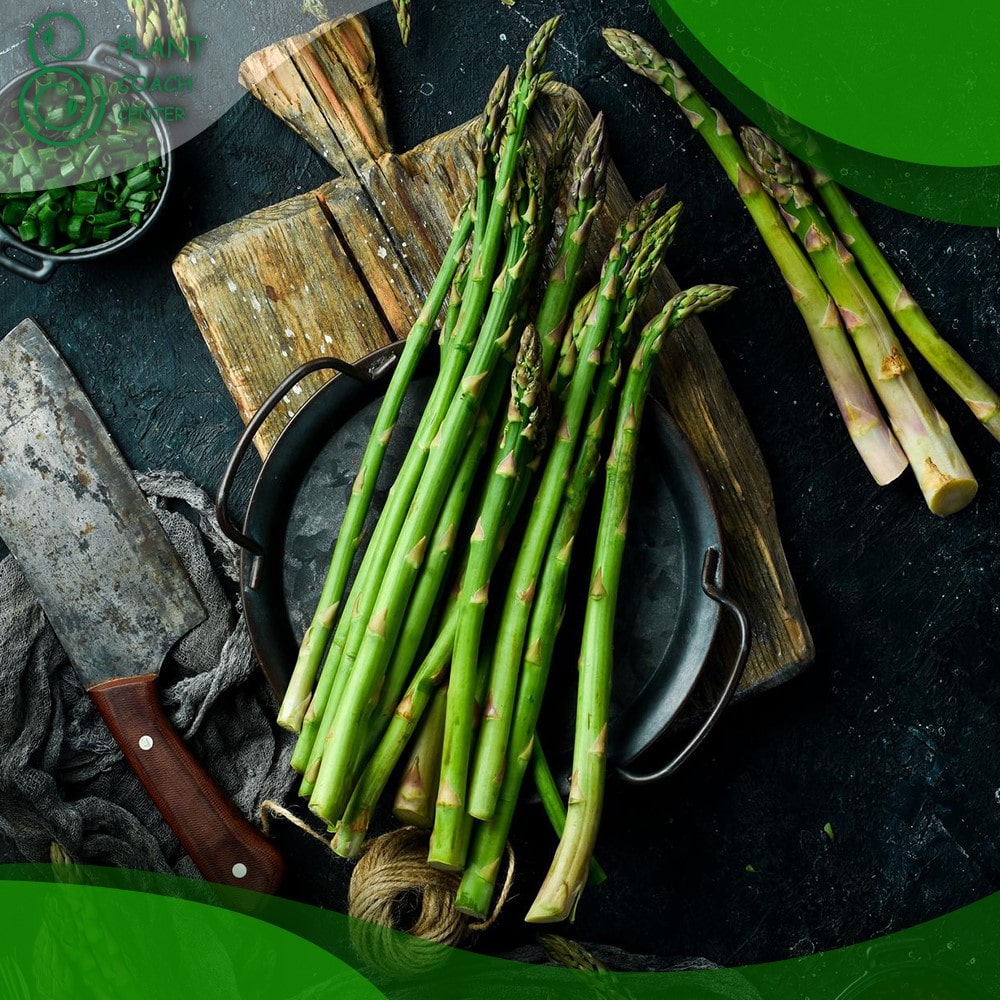Plants require care and attention to thrive, and knowing when to perform specific tasks, such as cutting back, is crucial for their overall health. In this comprehensive guide, we will delve into the world of plant coaching, focusing specifically on asparagus and asparagus ferns. Asparagus plants and their fern-like counterparts, asparagus ferns, have distinct growth patterns and maintenance requirements. By understanding when and how to cut back these plants, you can ensure their vitality and longevity in your garden or indoor space.
Understanding Asparagus and Asparagus Ferns
Asparagus Plants: Description and Characteristics
Asparagus plants (Asparagus officinalis) are perennial vegetables that belong to the Asparagaceae family. They are known for their delicious edible shoots and feathery foliage. Asparagus plants can grow up to five feet tall and feature vibrant green foliage that enhances the aesthetic appeal of any garden. Their edible shoots are prized for their tender texture and delicate flavor.
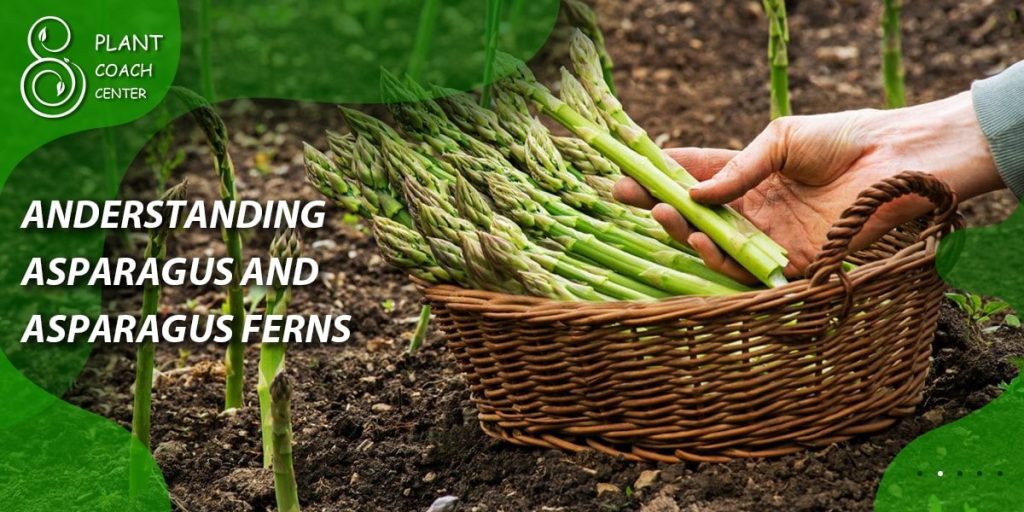
Varieties of Asparagus Plants
Several varieties of asparagus plants exist, each with its own unique characteristics. The most common types include:
- Mary Washington: This variety is renowned for its high productivity and excellent flavor. It is an all-male hybrid, making it an ideal choice for gardeners seeking maximum yields.
- Jersey Giant: Known for its robust growth, the Jersey Giant produces thick, succulent spears that are flavorful and tender. It is also disease-resistant, making it a popular choice among growers.
- Purple Passion: This variety stands out with its vibrant purple color, which is retained even after cooking. It offers a slightly sweeter taste compared to green asparagus and adds visual interest to dishes.
Asparagus Ferns: Description and Characteristics
Asparagus ferns (Asparagus aethiopicus) are not true ferns but rather members of the lily family. These versatile plants are valued for their delicate, lacy foliage and cascading growth habit, making them popular choices for hanging baskets or ground covers. Asparagus ferns are native to South Africa and thrive in warm climates.
Differences between Asparagus and Asparagus Ferns
While both asparagus plants and asparagus ferns share the same genus name, they differ significantly in appearance and growth habits. Asparagus plants produce edible shoots and have tall, upright stalks with fine, needle-like foliage. Asparagus ferns, on the other hand, do not produce edible shoots and have feathery, fern-like foliage that drapes and trails gracefully.
The Growth Cycle of Asparagus and Asparagus Ferns
Overview of the Growth Stages
Before we delve into the specific timing of cutting back asparagus and asparagus ferns, let’s explore the growth cycle of these plants. Understanding their growth stages will help you make informed decisions about when and how to prune or cut them back.
Asparagus Plants:
- Early Spring: Asparagus plants emerge from the ground in early spring as tender shoots known as spears. These spears grow rapidly and eventually develop into tall, leafy stalks.
- Late Spring to Summer: As the growing season progresses, the asparagus stalks continue to develop, reaching their full height. The fern-like foliage provides essential photosynthesis to nourish the plant’s underground crown, storing energy for the following year.
- Fall: Towards the end of the growing season, the foliage begins to change color, signifying the plant’s transition to dormancy. The foliage turns yellow, and the plant prepares for winter.
Asparagus Ferns:
- Spring: Asparagus ferns experience their most vigorous growth during the spring months. New fronds emerge, creating a lush and vibrant appearance.
- Summer: Throughout the summer, the ferns’ growth continues, with the fronds extending and cascading over the plant’s container or hanging basket.
- Fall to Winter: As cooler temperatures arrive, the growth of asparagus ferns slows down. The fronds may experience some dieback, which is a normal part of the plant’s natural cycle.
Factors Influencing Growth and Development
Several factors influence the growth and development of asparagus and asparagus ferns. Understanding these factors will help you determine the ideal timing for cutting back these plants:
- Climate: Asparagus plants and ferns thrive in different climates. Asparagus plants prefer temperate regions with distinct seasons, while asparagus ferns prefer warmer climates without harsh winter conditions.
- Soil Conditions: Both plants require well-draining soil rich in organic matter. Soil quality directly affects their growth and overall health.
- Sunlight: Asparagus plants prefer full sun exposure, while asparagus ferns can tolerate partial shade. Adequate sunlight is essential for both plants’ growth and vitality.
Recognizing Signs of Maturity
For asparagus plants, maturity is typically achieved after two to three years of growth. During this period, it is essential to refrain from harvesting the spears to allow the plant to establish a strong root system and crown.
Asparagus ferns reach maturity within a few months of growth. Once the ferns have fully developed, they are ready for pruning and maintenance to maintain their shape and prevent overgrowth.
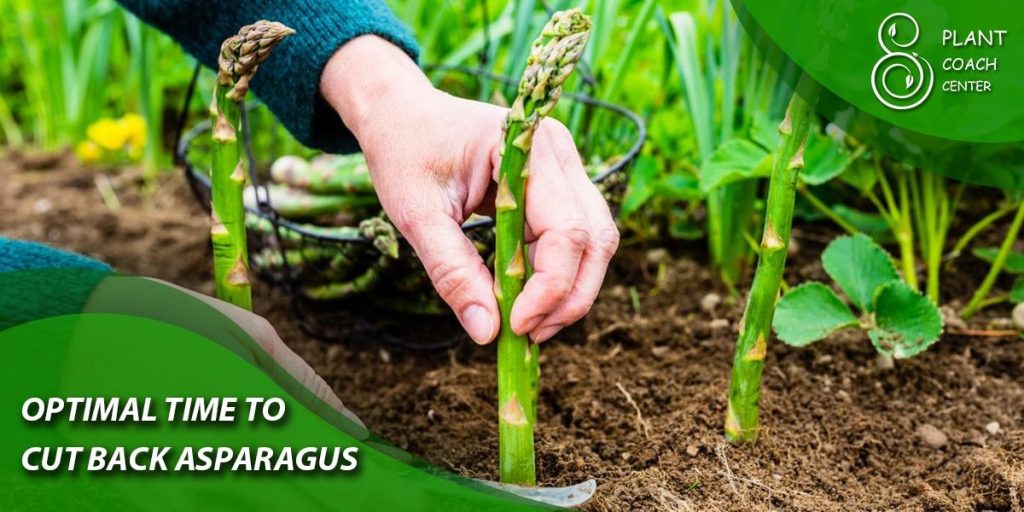
Optimal Time to Cut Back Asparagus
Asparagus plants require careful attention during various stages of their growth cycle to ensure a healthy and bountiful harvest. Understanding the optimal times to cut back on asparagus will promote vigorous growth and longevity.
Spring Maintenance for Mature Asparagus
In early spring, as the asparagus spears emerge from the ground, it’s essential to refrain from harvesting them during the plant’s first two to three years of growth. This practice allows the plant to direct energy toward establishing a strong root system and crown.
Once the asparagus plant reaches maturity (usually after two to three years), you can start considering spring maintenance, including cutting back old growth. At the beginning of the growing season, remove any dried and browned-out ferns that survived the winter. These dead fronds no longer contribute to the plant’s health and should be pruned to make way for new growth.
Techniques for Cutting Back Asparagus
- Pruning Shears: To cut back the asparagus ferns, use clean and sharp pruning shears. Make cuts at the base of the dead fronds, close to the soil level, to avoid damaging the healthy crown.
- Compost or Dispose: After pruning, collect the cut fronds and either compost them or dispose of them in a yard waste bin. Avoid leaving cuttings around the plant, as they may harbor pests or diseases.
Cutting Back Asparagus After Harvesting
Once the asparagus harvest season is over (usually in late spring to early summer), you can cut back the remaining foliage. Asparagus plants benefit from post-harvest pruning as it helps rejuvenate the plant and encourages robust growth for the following year.
Pruning the asparagus plants after harvesting also prevents the development of certain diseases and pests that might take advantage of the weakened foliage during the growing season.
Preparing Asparagus for Winter
As the fall season approaches and the asparagus foliage starts to yellow, it is essential to prepare the plant for winter dormancy. Avoid cutting back the ferns until they have turned completely yellow and dry. The yellowing foliage indicates that the plant has transferred energy to the crown for the winter season.
Once the foliage has fully yellowed and dried, you can proceed with cutting back the ferns. Trim the fronds to ground level, leaving only a few inches above the soil surface. This process helps protect the asparagus crown from potential frost damage during winter.
Pruning Asparagus Ferns: Timing and Techniques
Asparagus ferns, with their graceful appearance and cascading foliage, can be stunning additions to any garden or indoor space. Proper pruning at the right times is essential to maintain their health and appearance.

Understanding the Growth Habits of Asparagus Ferns
Asparagus ferns are fast-growing plants, especially during the spring and summer months. Their delicate, feathery fronds can become dense and intertwined over time, necessitating occasional pruning to keep them in check. Pruning also encourages new growth, leading to a fuller and more attractive appearance.
Pruning Asparagus Ferns for Maintenance
Regular maintenance pruning is essential to prevent asparagus ferns from becoming overly leggy or straggly. To maintain their shape and promote healthy growth, follow these steps:
- Trim Back Excessive Growth: Use clean and sharp pruning shears to trim back any excessive growth. Focus on areas where the ferns have become too long or have started to trail excessively.
- Shaping the Plant: Asparagus ferns look best when they maintain a balanced and bushy appearance. Prune the fronds evenly on all sides to achieve a symmetrical shape.
Pruning Asparagus Ferns to Rejuvenate the Plant
Over time, asparagus ferns may experience some dieback or develop sparse and tired-looking fronds. Rejuvenating pruning can help revitalize the plant and encourage new growth:
- Removing Dead or Damaged Fronds: Trim away any fronds that have turned yellow or brown, as they are likely dead or damaged. Removing these fronds will not only improve the plant’s appearance but also prevent the spread of potential diseases.
- Stimulating New Growth: To stimulate new growth, selectively prune some of the healthy fronds. Make the cuts just above a healthy node (the point where a frond emerges from the stem). This technique will encourage the plant to produce new fronds from the pruned areas.
Timing for Rejuvenation Pruning
The best time for rejuvenation pruning of asparagus ferns is in early spring or late winter, just before the plant’s active growth resumes. This allows the plant to direct its energy towards new growth during the growing season.
It’s important to avoid aggressive pruning during the fall or winter months, as the plant might be more susceptible to damage during colder weather.
Signs of Plant Problems in Asparagus and Asparagus Ferns
Maintaining the health of your asparagus and asparagus ferns is essential for their optimal growth and longevity. Being aware of common plant problems and their signs will help you address issues promptly and ensure the well-being of your plants.
Common Pests and Diseases Affecting Asparagus Plants
- Asparagus Beetle (Crioceris asparagus): Asparagus beetles are small, black, and red or yellow insects that feed on the foliage and spears of asparagus plants. Look for chewed or skeletonized leaves and inspect the plants for the presence of adult beetles or their larvae.
- Fusarium Crown and Root Rot: This fungal disease affects the asparagus crown and roots, leading to wilting, yellowing, and stunted growth. Over time, the ferns may become weak and die off. Fusarium crown and root rot is often caused by poorly draining soil and can spread rapidly if not addressed.
- Rust (Puccinia asparagi): Rust is a common fungal disease that affects asparagus plants. It appears as rusty-orange pustules on the ferns’ surface and can cause defoliation and weaken the plant.
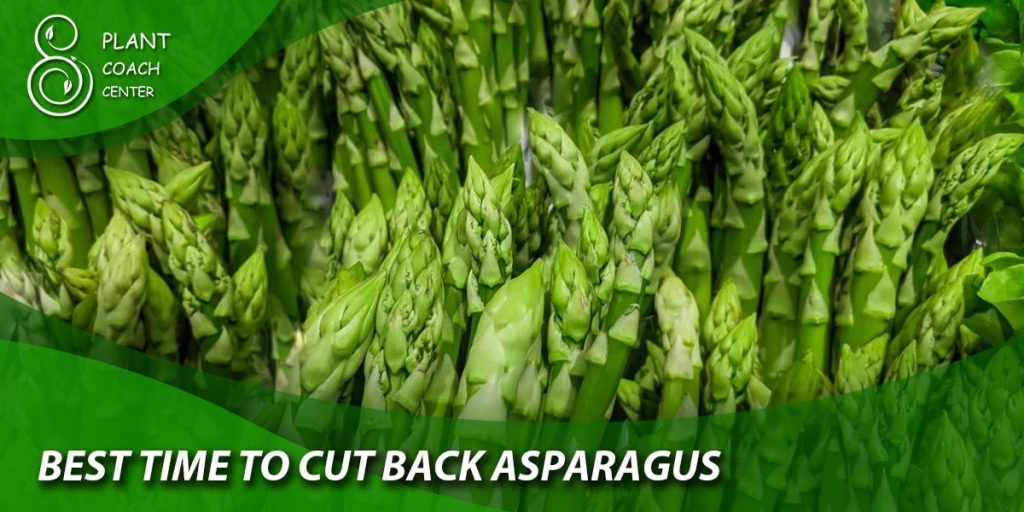
Recognizing Nutrient Deficiencies in Asparagus and Asparagus Ferns
- Nitrogen Deficiency: Nitrogen is essential for promoting lush green foliage in both asparagus plants and ferns. A nitrogen deficiency is characterized by yellowing leaves and reduced growth.
- Potassium Deficiency: Potassium is crucial for overall plant health, helping regulate water uptake and nutrient absorption. Symptoms of potassium deficiency include yellow or brown leaf edges and weakened stems.
- Phosphorus Deficiency: Phosphorus is vital for root development and energy transfer within the plant. Signs of phosphorus deficiency include stunted growth and purplish discoloration on the leaves.
Managing Plant Problems
- Identification and Treatment: Regularly inspect your plants for signs of pests or diseases. If you identify any issues, take immediate action to address them. Use appropriate organic or chemical treatments as necessary, ensuring to follow the instructions on the product label.
- Prevention Measures: To prevent plant problems, practice good garden hygiene. Remove and dispose of any affected plant material properly. Avoid overwatering, as damp conditions can promote the development of fungal diseases.
Dealing with Yellowing Foliage
Yellowing foliage in asparagus and asparagus ferns can result from various factors, including nutrient deficiencies, improper watering, or pests. To address this issue:
- Check Soil Moisture: Ensure your plants receive the right amount of water, and adjust the watering frequency as needed. Avoid overwatering, as this can lead to root rot.
- Soil Nutrients: Conduct a soil test to determine if any nutrient deficiencies are affecting your plants. Amend the soil with appropriate fertilizers to address any imbalances.
- Pests: If pests are the cause of yellowing foliage, identify the specific pest and use targeted treatments to control their population.
Addressing Stunted Growth or Lack of Vigor
Stunted growth or lack of vigor in asparagus and asparagus ferns can be attributed to various factors, including poor growing conditions and environmental stressors. To address these issues:
- Growing Conditions: Ensure that your plants are in an optimal environment with adequate sunlight, well-draining soil, and proper air circulation. Consider transplanting them to a more suitable location if necessary.
- Fertilization: Regularly feed your plants with a balanced fertilizer to provide essential nutrients for healthy growth. Follow the recommended application rates and avoid overfertilization, as excessive nutrients can lead to imbalances and cause harm to the plants.
- Mulching and Weed Control: Mulching around the base of the plants can help retain soil moisture and suppress weed growth, which can compete with asparagus for nutrients and water.
Managing Fungal Diseases and Infections
- Early Detection: Regularly inspect your plants for any signs of fungal diseases, such as unusual spots, discoloration, or lesions. Early detection allows for prompt action.
- Pruning: If you notice any infected parts, prune them immediately to prevent the spread of the disease to healthy parts of the plant.
- Fungicides: In severe cases, use appropriate fungicides as a preventive measure or to control the spread of fungal diseases. Always follow the instructions on the product label.
Handling Pest Infestations
- Manual Removal: For small-scale infestations, manually remove pests from the plants. Wear gloves and gently pick off insects, dropping them into a container of soapy water.
- Biological Controls: Introduce natural predators, such as ladybugs or lacewings, to control pest populations. These beneficial insects can help keep the pest population in check.
- Insecticidal Soap or Neem Oil: Use insecticidal soap or neem oil as a natural remedy to treat pests on your plants. These options are safer for the environment and beneficial insects.
Dividing Asparagus Crowns for Propagation
- Choose Established Crowns: Dividing asparagus crowns is an effective way to propagate your plants. Choose well-established, mature crowns for this process.
- Spring Division: Spring is the ideal time to divide asparagus crowns. Carefully dig up the crown and divide it into sections with healthy root systems, making sure each division has several buds.
- Replanting: Plant the divisions at the same depth as the original crown in well-prepared soil. Water thoroughly and provide appropriate care to ensure successful establishment.
Propagating Asparagus Ferns
- Division: Asparagus ferns can be propagated through division, similar to asparagus crowns. Divide mature plants during the growing season, ensuring that each division has roots and healthy fronds.
- Planting: Plant the divisions in suitable containers with a well-draining potting mix. Water the new plants gently and place them in a location with bright, indirect sunlight.
Growing Asparagus from Seeds
- Seed Selection: Choose high-quality asparagus seeds from reputable sources or save seeds from your existing plants. Ensure the seeds are fresh and viable for better germination rates.
- Preparing Seed Trays: Fill seed trays or small pots with a well-draining seed-starting mix. Moisten the mix slightly before sowing the seeds.
- Sowing Seeds: Plant the seeds about half an inch deep in the soil and cover them lightly with the seed-starting mix. Keep the soil consistently moist, but avoid overwatering.
- Germination: Asparagus seeds can take several weeks to germinate. Maintain a warm and humid environment to encourage germination.
- Transplanting: Once the seedlings have developed several sets of true leaves, they can be transplanted into individual containers or directly into the garden.
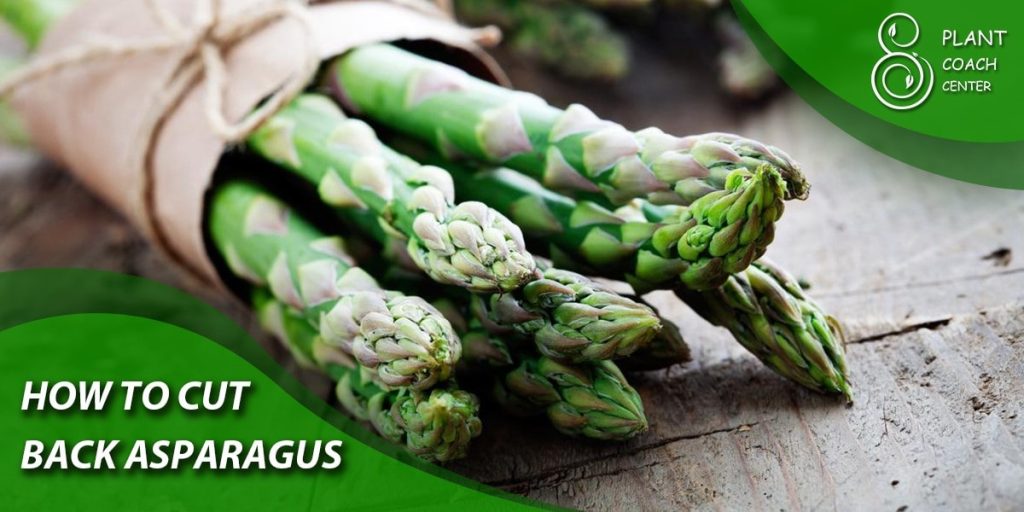
Selective Pruning for Enhanced Productivity
- Pruning for Spears: To ensure healthy and abundant spear production in asparagus plants, allow some spears to grow fully during the harvest season. Harvesting all the spears may weaken the plant over time.
- Harvesting: Gently snap or cut the spears at ground level when they reach about 6-8 inches in height. Harvesting at this stage ensures tender and flavorful shoots.
- Non-Harvest Season: After the harvest season ends, allow the remaining spears to grow into ferns. These ferns will provide energy to the plant’s crown for the next year’s growth.
Best Practices for Long-Term Care of Asparagus and Asparagus Ferns
- Soil Requirements and Preparation: Ensure the soil is well-draining and rich in organic matter. Incorporate compost into the soil before planting to improve its fertility.
- Sunlight and Water Needs: Asparagus plants thrive in full sun, while asparagus ferns prefer bright, indirect light. Water the plants consistently, keeping the soil evenly moist but not waterlogged.
- Fertilization and Feeding Schedules: Provide regular feedings with balanced fertilizers during the growing season. Follow the recommended dosage and avoid overfertilization.
- Mulching and Weed Control: Mulch around the plants to conserve moisture and suppress weed growth. Remove weeds regularly to reduce competition for nutrients.
- Protecting Plants from Extreme Weather Conditions: In regions with harsh winters, consider covering asparagus plants with a layer of mulch or straw to protect them from freezing temperatures.
Last to say
Knowing when to cut back asparagus and asparagus ferns is essential for maintaining their health and encouraging optimal growth. By understanding the growth cycles and employing proper pruning techniques, you can keep these plants thriving and productive in your garden or indoor space.
Plant coaching involves attentively observing your plants, identifying potential issues, and taking timely actions to address them. Whether it’s dealing with pests and diseases, rejuvenating the plants through pruning, or propagating them for further growth, a well-informed and caring approach will lead to a successful gardening experience.
Embrace the joys of plant coaching, and you’ll be rewarded with beautiful, lush asparagus and asparagus ferns that enrich your surroundings and provide delightful moments throughout the year.
For more information and helpful tips, visit plantcoachcenter.com.
When is the best time to cut back asparagus plants?
Early spring for mature plants, after harvesting for post-harvest maintenance, and fall for winter preparation.
How do I propagate asparagus ferns?
Asparagus ferns can be propagated through division, separating mature plants into new sections with roots.
How do I identify and treat common asparagus pests?
Regularly inspect for asparagus beetles, rust, and fungal diseases. Use targeted treatments or natural predators for control.


